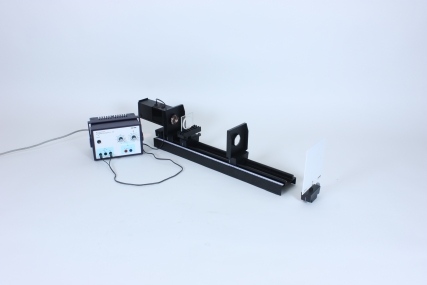
Technical data Newton's ringsArticle no: P1195300  Principle When a parallel beam of light strikes a tapered film of air created between one plane and one spherical glass body, a pattern of concentric ring-shaped bands is formed due to interference of light waves. The arrangement is called the Newtonian chromatic glass and the interference pattern Newton's Rings. These interference rings are brought about because a part of the light passes directly through the plane-parallel plate and the lens body and another part is first reflected at the lens surface and then at the glass plate (comp. Fig. ). Benefits
Tasks How can we explain the phenomenon of Newton's Rings? Direct a parallel beam of light through a Newtonian chromatic glass and with the aid of the resulting rings, determine the radius of the lens-shaped glass body.
Scope of delivery
| ||||||||||||||||||||||||||||||||||||
Robert-Bosch-Breite 10 – 37079 Göttingen – Germany
www.phywe.com

